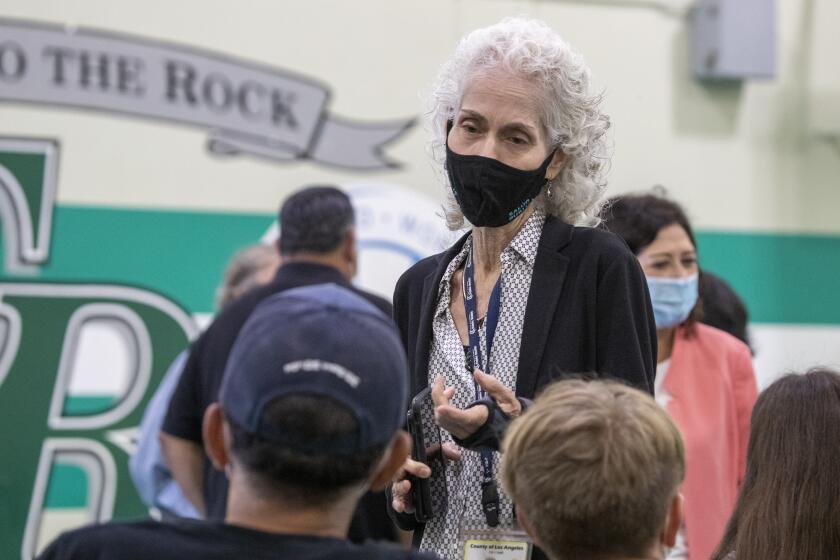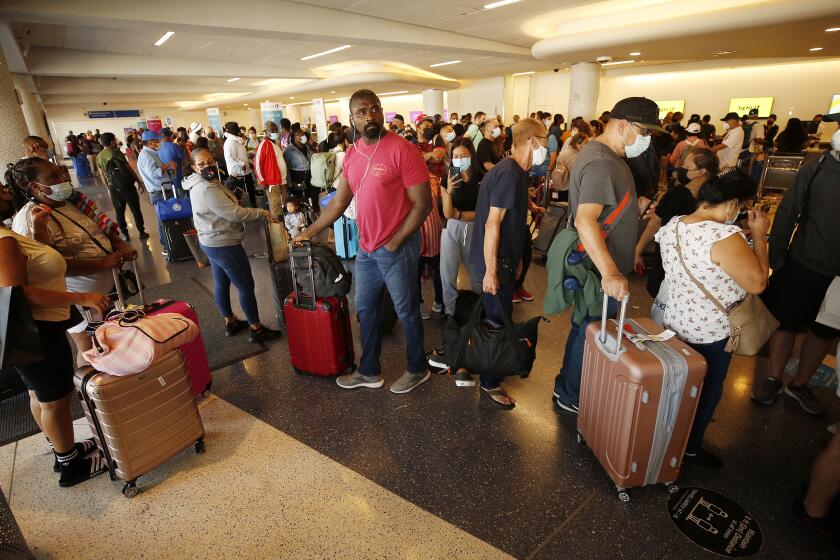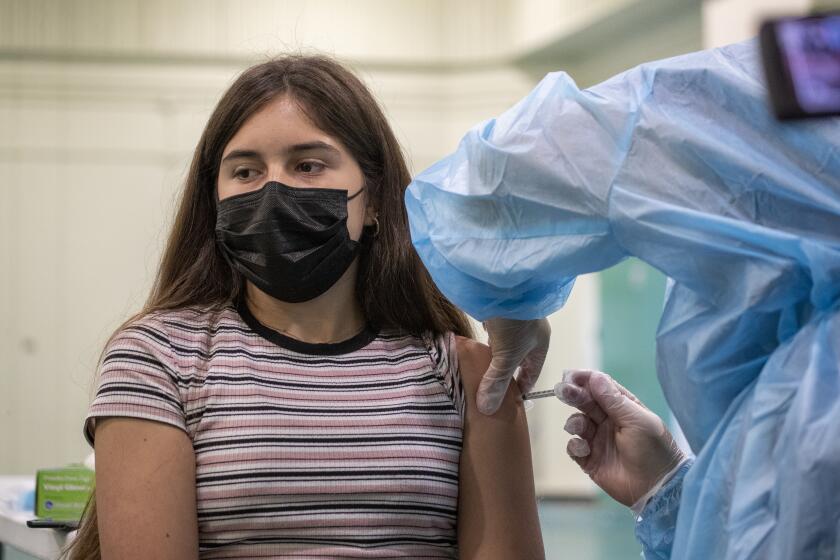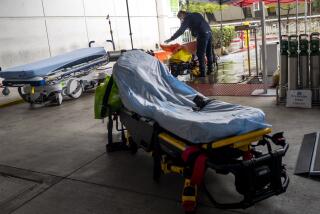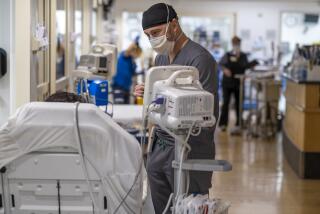ICU beds filling up in San Joaquin Valley, triggering hospital surge order
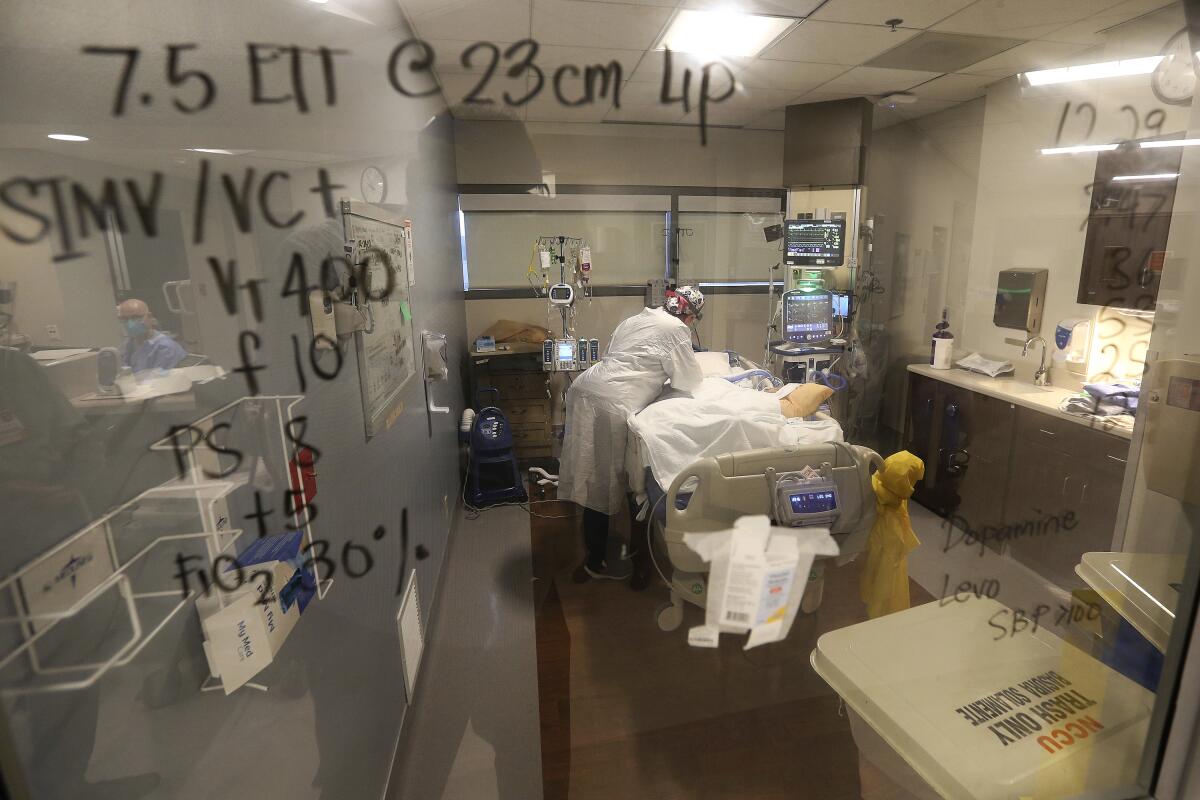
- Share via
The share of available intensive care beds has dropped to concerningly low levels in the San Joaquin Valley, prompting state health officials to implement COVID-19 hospital surge protocols aimed at alleviating the strain on healthcare facilities.
Under a state health order issued last month, additional measures are imposed when a region’s hospitals report having less than 10% of their cumulative staffed adult ICU beds available for three straight days.
The San Joaquin Valley is the first to meet that threshold. As of Thursday, only 8.6% of such beds were available across the region — which the state defines as Calaveras, Fresno, Kern, Kings, Madera, Mariposa, Merced, San Benito, San Joaquin, Stanislaus, Tulare and Tuolumne counties.
Hospitals within those areas will now have to follow these protocols for at least the next week:
- All general acute care hospitals that have ICU bed availability “must accept transfer patients when clinically appropriate and directed by the medical and health operational area coordinator.”
- General acute care hospitals in the region with ICU bed availability “must accept transfer patients when clinically appropriate and directed by the regional disaster medical health specialist.”
- If there’s no ICU bed availability regionwide, then general acute care hospitals in the state have to accept transfer patients “when clinically appropriate” and ordered by the director of the state Emergency Medical Services Authority or designee.
The ubiquity of the Delta variant should be cause for some caution heading into Labor Day weekend, health officials say.
According to the California Department of Public Health, “This action will ensure the state’s healthcare delivery system is prepared and can respond appropriately.”
“The state has learned from previous increases in COVID-19 cases and hospitalizations that coordination at the local, regional and statewide level is the best course of action,” health officials wrote in a news release announcing the additional measures. “While the state works to further increase the number of eligible Californians vaccinated, we must take steps to protect the unvaccinated who are more at risk of severe illness, hospitalization and death from COVID-19.”
The region’s status will be reevaluated Thursday.
The robust vaccine rollout, as well as ubiquity of the highly contagious Delta variant, has created a wide spectrum of risk — with people’s inoculation status, home lives and job settings all helping shape how cautious they should be.
San Joaquin Valley is one of five regions that state officials sketched out late last year amid California’s harrowing fall-and-winter coronavirus surge.
As infections skyrocketed and hospitals were deluged with COVID-19 patients, Gov. Gavin Newsom in early December announced that a regional stay-at-home order — a far-reaching array of restrictions on businesses and activities — would be implemented once a region’s ICU bed space fell below 15% of capacity.
California eventually retired that approach as the winter wave waned, and the state lifted virtually all coronavirus-related restrictions on businesses and public spaces in mid-June.
Compared with some other large states, California is seeing some positive signs in fighting the latest coronavirus surge fueled by the Delta variant.
Statewide, 18.3% of staffed adult ICU beds were available as of Thursday. However, that figure differed by region:
- Bay Area (Alameda, Contra Costa, Marin, Monterey, Napa, San Francisco, San Mateo, Santa Clara, Santa Cruz, Solono, Sonoma) — 20.6%
- Greater Sacramento (Alpine, Amador, Butte, Colusa, El Dorado, Nevada, Placer, Plumas, Sacramento, Sierra, Sutter/Yuba, Yolo) — 12.9%
- Northern California (Del Norte, Glenn, Humboldt, Lake, Lassen, Mendocino, Modoc, Shasta, Siskiyou, Tehama, Trinity) — 15.3%
- Southern California (Imperial, Inyo, Los Angeles, Mono, Orange, Riverside, San Bernardino, San Diego, San Luis Obispo, Santa Barbara, Ventura) — 20.1%
As of Thursday, 1,285 total adult ICU beds were available across the state, health data show. By comparison, 2,092 coronavirus-positive patients were receiving intensive care that day.
More to Read
Sign up for Essential California
The most important California stories and recommendations in your inbox every morning.
You may occasionally receive promotional content from the Los Angeles Times.
